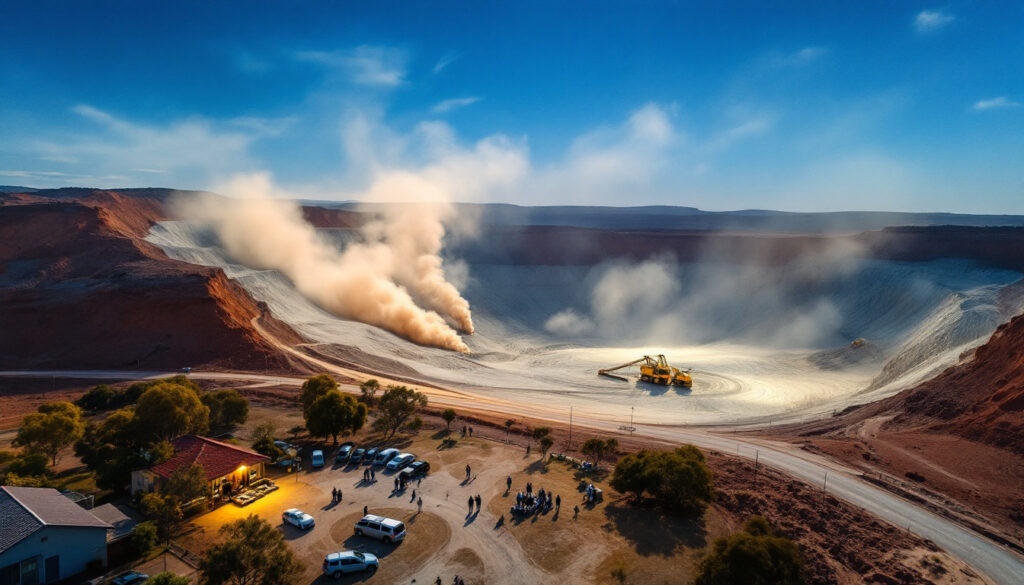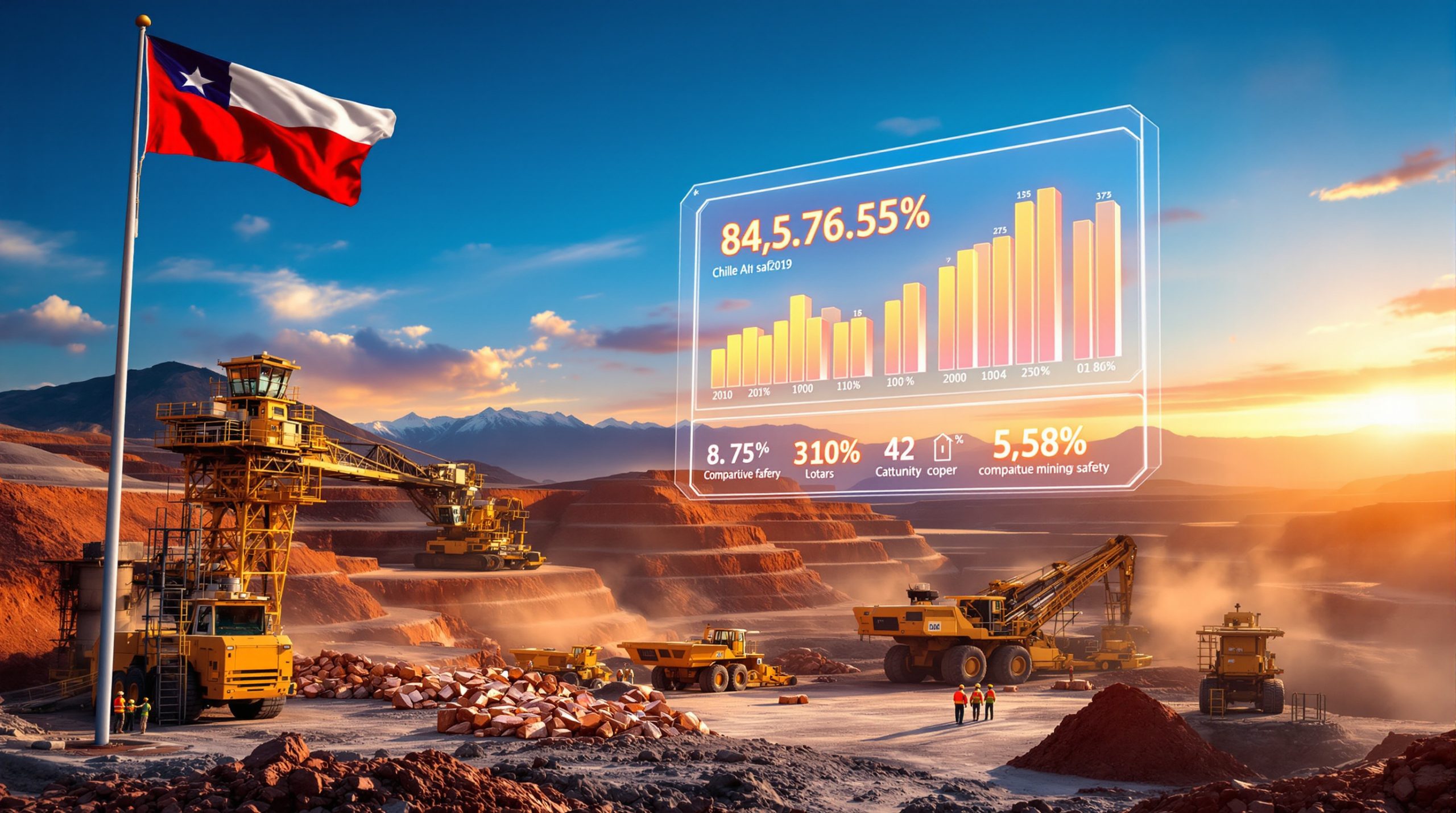What is the Greenbushes Lithium Mine Controversy?
In the picturesque southwest of Western Australia, a battle is brewing between residents and one of the world's largest lithium mines. The Greenbushes Lithium Mine, located just 240 kilometers south of Perth and a mere 3 kilometers from the Greenbushes town center, has become the epicenter of growing health and environmental concerns.
Operated by Sino-American company Talison Lithium, this facility has the distinction of being Australia's oldest lithium mine, operational since 1888. What began as a tin mining operation has evolved into a critical global supplier of spodumene concentrate, the lithium-bearing mineral essential for battery manufacturing and the renewable energy transition.
Recent years have seen dramatic expansion at the site, with production increasing by 50% since 2023, driven by insatiable global demand for lithium batteries. This rapid growth has brought the mining operations closer to residential areas than ever before, creating unprecedented challenges for the local community.
"We underestimated the community impact of rapid expansion," admitted Rob Telford, CEO of Talison Lithium, during a recent community meeting where dozens of concerned residents voiced their grievances.
Background of Talison Lithium's Greenbushes Operation
The Greenbushes mine sits atop one of the world's largest and highest-grade hard rock lithium deposits. Its strategic importance to Australia's ambitious lithium plans and the global transition to clean energy cannot be overstated. The operation encompasses both open-cut mining and on-site processing facilities that produce lithium concentrate for export.
What distinguishes Greenbushes from many other mining operations is its proximity to human habitation. Unlike remote mines in Australia's outback, this facility operates within viewing distance of homes, schools, and businesses. This unusual proximity has exposed fundamental flaws in regulatory frameworks designed primarily for isolated mining operations.
The mine previously faced environmental scrutiny in 2018 regarding water table impacts, but the current expansion has introduced new challenges of unprecedented scale and intensity.
Key Community Concerns
Residents report a litany of problems that have transformed their once-peaceful community into what some locals describe as "a nightmare".
White dust regularly blankets vehicles, gardens, and outdoor furniture throughout the town. During particularly active mining periods, residents describe visible dust clouds drifting from the mine site across residential areas. Beyond the nuisance factor, this dust has become the focal point of serious health concerns.
Noise pollution, particularly from nighttime operations, has disrupted sleep patterns throughout the community. Machinery beeping, crushing operations, and haul trucks operate around the clock, with sound measurements reportedly reaching 65 dB during overnight hours.
Light pollution from the 24/7 operation has transformed the once-dark night sky, affecting both residents and local wildlife. The increased truck traffic through town has raised safety concerns, especially regarding school zones and pedestrian areas.
Most alarmingly, health impacts reported by local residents include persistent coughing, eye irritation described as "sticky and gooey," sleep disturbances, and respiratory discomfort. These symptoms have prompted deeper questions about the long-term health implications of living in such close proximity to an industrial-scale lithium operation.
How is Dust Pollution Affecting Greenbushes Residents?
The most visible and immediate impact of the mine's expanded operations has been the proliferation of dust throughout the Greenbushes community. What might be dismissed as a mere nuisance has become a daily health concern for many residents.
Documented Dust Violations
Official records reveal that the mine exceeded regulated safe dust limits at least eight times in 2024, with four additional violations already recorded in early 2025. Air quality monitoring has shown particulate matter (PM10) levels reaching 120 µg/m³ – double Western Australia's regulatory limit of 60 µg/m³.
These violations aren't just statistics on a regulatory report. For residents, they represent days when outdoor activities become impossible, windows must remain closed despite the heat, and laundry can't be hung outside to dry. Photos submitted by residents show cars and rooftops covered in a distinctive white powdery substance, providing tangible evidence of the dust's pervasiveness.
Since January 2025, Talison has installed real-time air quality sensors in residential zones, though residents have questioned the placement and monitoring of these devices.
"The dust isn't just annoying – it's inescapable," explains Monte Ling, a long-time Greenbushes resident. "It triggers relentless coughing and leaves our eyes feeling sticky. You can taste it in the air on bad days."
Reported Health Impacts
A community-led health survey indicated that 68% of surveyed households report respiratory symptoms they attribute to the mining operations. Among these complaints:
- Persistent coughing, particularly at night
- Eye irritation described as burning and gritty
- Increased use of asthma medications
- Throat discomfort and voice changes
- Sleep disturbances from both physical symptoms and operational noise
- General respiratory discomfort and difficulty breathing during high-dust periods
These symptoms appear to affect vulnerable populations disproportionately. Local school absenteeism rates have reportedly increased by 22% since 2023, raising concerns about the impact on children's education and development.
The health impacts extend beyond physical symptoms. Residents describe heightened anxiety about potential long-term consequences and frustration with authorities' perceived slow response to their concerns.
What Health Risks Do Residents Fear from Mine Dust?
Beyond the immediate irritation and discomfort, Greenbushes residents harbor deeper concerns about potential long-term health effects from chronic exposure to mine dust.
Silicosis Concerns
Chief among residents' fears is the development of silicosis, an incurable lung disease caused by inhaling crystalline silica dust. This progressive condition has a latency period of up to 12 years, meaning that damage could be occurring long before symptoms become apparent.
Mining operations typically involve the crushing and processing of silica-containing rocks, raising legitimate questions about dust composition. Residents have expressed particular concern about children's exposure, given their developing respiratory systems and longer potential exposure periods.
"We need clarity on long-term effects, not corporate assurances," states Tash Issler, a Greenbushes resident and parent. "What seems like a minor irritation today could be devastating a decade from now. That uncertainty hangs over our community."
The 2019 silicosis outbreak linked to Queensland coal mines remains fresh in many residents' minds, serving as a cautionary tale about industrial dust exposure in Australia. Medical records indicate that 45% of Greenbushes residents now report using inhalers or corticosteroids for respiratory symptoms, up significantly from pre-expansion figures.
Talison's Response to Health Concerns
Talison Lithium has implemented monthly testing of dust composition over the past year using X-ray diffraction for mineral analysis. According to CEO Rob Telford, these tests show the dust is "largely benign" with "negligible levels" of harmful silica – approximately 2% content, which falls below the 5% threshold typically considered hazardous.
"Even benign dust is an irritant" to eyes, nose, and throat, Telford acknowledged during a community meeting. The company maintains that while uncomfortable, the dust poses no significant long-term health risk based on their testing protocols.
Residents remain skeptical, pointing to the inherent conflict of interest in having the company test its own emissions. The community has requested independent analysis using more sophisticated methods such as Fourier-transform infrared spectroscopy (FTIR) to detect potentially harmful components missed by standard testing.
A particular concern is the potential presence of trace heavy metals like nickel and arsenic, which even in small quantities could pose health risks with prolonged exposure. These elements have not been adequately addressed in Talison's public disclosures, according to community advocates.
What Actions is Talison Taking to Address the Issues?
Facing mounting community pressure and media scrutiny, Talison Lithium has begun implementing measures to mitigate the impact of its operations on Greenbushes residents.
Operational Changes Implemented
The company has established additional dust management triggers that initiate preventive actions before regulatory limits are reached. This includes machinery shutdown procedures when PM10 levels exceed 80 µg/m³, considerably below the regulatory threshold of 60 µg/m³.
On the ground, Talison has increased the use of what it terms "non-hazardous" dust suppressant chemicals, primarily magnesium chloride, which is applied hourly on haul roads. Before-and-after photography provided by the company shows significantly reduced dust plumes following these applications.
Traffic management has also been adjusted, with a 15% reduction in haulage traffic since February 2025, particularly during school transit hours. The company has rerouted some operations to minimize night noise near residential areas.
"We've implemented AI-driven dust prediction models," Telford explained during a recent community briefing. "These allow us to anticipate high-risk periods based on weather patterns and adjust operations proactively rather than reactively."
Additionally, Talison has allocated $2 million to a community health fund specifically for respiratory screenings and ongoing health monitoring, though details on administration and accessibility remain under discussion.
Community Engagement Efforts
Talison has intensified its community outreach, holding a widely-attended town hall meeting where CEO Rob Telford expressed "deep regret" for the impact of the expansion on local residents. "We've heard your concerns, and we're committed to making a difference going forward," Telford told residents.
The company has established a community liaison office in Greenbushes town center staffed five days a week, created a 24-hour complaint hotline, and begun publishing monthly environmental monitoring data on a public-facing website.
Despite these efforts, community meeting minutes indicate 83% dissatisfaction with initial measures, suggesting the company faces an uphill battle in rebuilding trust. Glenn Collier, a longtime resident, observed: "Progress is overdue but welcomed. The real test will be consistent improvement, not just temporary fixes while the spotlight is on them."
Are Current Mining Regulations Adequate for Greenbushes?
The Greenbushes controversy has exposed potential inadequacies in Western Australia's mining regulatory framework, particularly regarding operations near residential communities.
Regulatory Framework Challenges
Western Australia's Mining Act 1978 was last substantively updated in 2012, predating the lithium boom and lacking specific provisions for mines in close proximity to residential areas. The regulatory structure was primarily designed for remote operations with minimal human impact, creating a disconnect when applied to mines like Greenbushes.
Current penalties for environmental violations stand at approximately $25,000 per incident in Western Australia – a fraction of the $500,000 fines levied in Queensland for comparable offenses. This discrepancy raises questions about the deterrent effect of existing penalties, especially for large multinational operations.
Buffer zone requirements present another area of concern. Western Australian regulations mandate just a 1-kilometer separation between mining operations and residential zones, compared to 5 kilometers in Canadian jurisdictions with similar mining activities. This disparity highlights potential gaps in protective measures for communities.
Enforcement mechanisms have also come under scrutiny. Quarterly compliance inspections by regulatory authorities stand in contrast to monthly inspections required in New South Wales, potentially allowing violations to continue undetected for longer periods.
Government Response
Western Australia Premier Roger Cook has stated that he is "monitoring the situation" at Greenbushes, emphasizing that mining companies must maintain their "social license to operate" through responsible community engagement.
"We're pleased that Talison is responding to community anxiety," the Premier noted in a press statement. "However, we expect full compliance with all regulatory requirements and will consider appropriate action if these standards aren't met."
Despite these assurances, no specific regulatory changes have been announced. The Department of Mines has indicated an "ongoing review" of noise and light pollution standards, but concrete timelines and outcomes remain undefined.
The 2023 case of a Victorian gold mine fined $1.2 million for similar violations offers a potential model for stronger enforcement. Similarly, the European Union's Critical Raw Materials Act (2024), which mandates community consent for mining operations, provides a framework that some advocacy groups suggest could be adapted for the Australian context.
How Are Residents Organizing Their Response?
Faced with what they perceive as inadequate corporate and governmental action, Greenbushes residents have mobilized to advocate for themselves.
Community Action Steps
More than 200 residents have joined the newly-formed Greenbushes Environmental Action Group (GEAG), representing a significant portion of the small town's population. This organization has spearheaded several initiatives to document, publicize, and address their concerns.
"We're crowdsourcing funds for legal action," explains Harlee Perrin, GEAG Coordinator. "When corporate interests and regulatory oversight fail, sometimes the courts are the only recourse for environmental justice."
A citizen science program has deployed portable air quality monitors in 20 households throughout the community, creating an independent data set to compare against company-provided statistics. Residents are collecting their own dust samples for independent laboratory analysis, focusing particularly on silica content and trace metals.
The group has gathered over 15,000 signatures on a petition calling for independent health monitoring and stricter enforcement of existing regulations. This groundswell of support extends well beyond Greenbushes, indicating broader regional concern about mining decarbonisation efforts and the ESG challenges and opportunities in mining.
GEAG has also engaged the Environmental Defenders Office (EDO), a public interest environmental law organization, to explore legal options and regulatory complaints. The social media campaign #DustFreeGreenbushes has gained traction with over 50,000 posts, attracting national media attention and amplifying resident concerns.
Resident Testimonials
Personal stories have become powerful tools in the community's advocacy efforts, putting human faces to environmental statistics.
Tash Issler and Monte Ling describe living near the mine as a "nightmare" that has transformed their daily lives. "We can't open windows, can't enjoy our gardens, can't even have friends over because we're embarrassed by the constant dust and noise," Ling explained during a community forum.
Glenn Collier, a resident for over 30 years, questions the timing of Talison's response: "It's telling that serious action only began after media attention. For months, our complaints fell on deaf ears until journalists started asking questions."
Parents express particular concern about impacts on children. "My daughter's asthma has worsened dramatically since the expansion," one resident testified. "She's missed weeks of school this year alone. What parent wouldn't fight against that?"
These testimonials, combined with growing scientific documentation and media coverage, are gradually shifting the balance of power in what residents characterize as a David versus Goliath struggle between a small community and a multinational mining operation at the heart of the global clean energy transition. For those interested in understanding these dynamics further, a beginner's guide to mining investments can provide context on how such conflicts impact the broader industry, while exploration of innovative digital technologies in mining shows how data-driven approaches might help address similar environmental challenges in the future.
Want to Stay Ahead of Critical Mineral Discoveries?
Don't miss the next major mineral discovery announcement on the ASX. Discover how our proprietary Discovery IQ model provides real-time alerts on significant discoveries, turning complex mineral data into actionable investment insights. Start your 30-day free trial today and position yourself ahead of the market.




